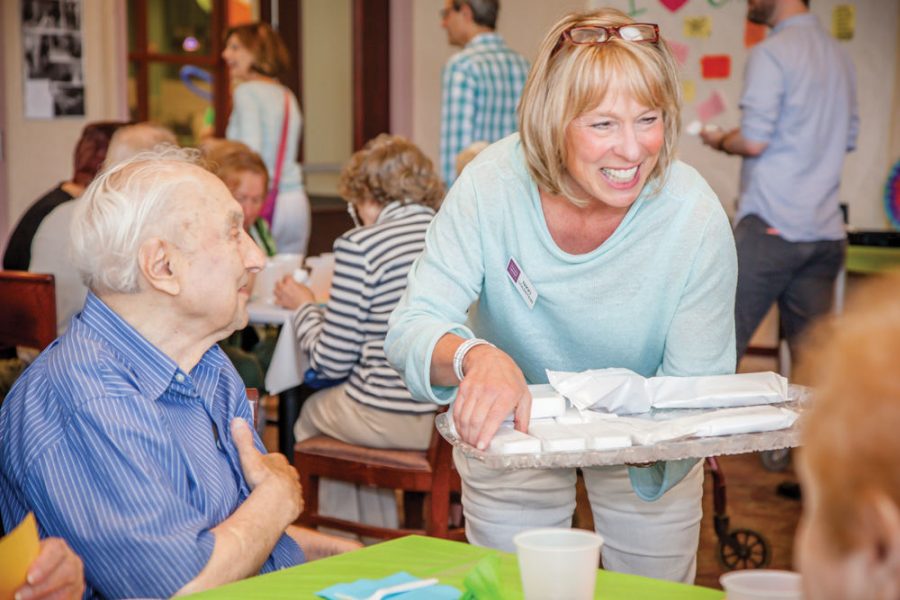The power of connecting
Published July 19, 2018
“Greet everyone with a warm, cheerful, and pleasant countenance.” (Pirkei Avot 1:15)
There are a myriad of programs, classes, events and activities just waiting for someone to register; the list of options for involvement, connecting and engaging with others seems endless. Yet many adults in America are lonely. Using the UCLA Loneliness Scale, Cigna, the health insurance company, conducted a nationwide survey and found that “nearly 50 percent of respondents reporting that they feel alone or left out always or sometimes.”
Should you believe that having a mobile device and internet service are the answers to stave off isolation, think again. In the age of unprecedented technology that allows us access to people and places around the world—and beyond—research shows that “virtual” cannot replace “real” when it comes to interpersonal interaction.
Loneliness is a public health threat with a measurable financial cost; which explains why a health insurance firm would undertake and fund a massive study. The negative health effects of loneliness are serious and include higher risks for heart disease and stroke and lowered ability to resist and fight disease. It isn’t only older people who are lonely, but older adults must overcome some especially daunting barriers in order to feel less solitary.
Just as an infection isn’t cleared up when the antibiotics are still at the pharmacy, the ill effects of loneliness are not mitigated simply because a robust menu of programmatic options for retirees is available. Obstacles for older adults to successfully participate in groups with others include inadequate financial resources for fees and membership dues; lack of accessible, convenient transportation; and facilities and gathering places that don’t accommodate physical and sensory impairments. These challenges build a barricade that seems unscalable.
But even if all of these hurdles are removed, there exists a not so obvious hindrance to social interaction. I’ve seen the enemy, and she is me. Lack of confidence in one’s own social skills may be the silent impediment to overcoming isolation. A 2015 study in the United Kingdom concluded that “social participation amongst lonely older people will not improve through the removal of previously reported barriers alone; instead, older peoples’ beliefs, fears and identities must be addressed.”
Creating a welcoming, inviting, warm atmosphere is a key to helping people cross the Rubicon from isolation to social connectedness. Just like in the old TV show “Cheers,” at Crown Center for Senior Living, we strive to be the place “where everybody knows your name.” Not only the names of people who reside at Crown, but as a community center open to retirees in the area, we work to know the names of people who participate, volunteer, and visit Crown Center.
We actively reach out to people via telephone or in person to invite them to join our circle. I believe that the most important component of the fight against loneliness is outreach — is community. We must arm our organizations with the people power to take on the task of ensuring that each individual is invited, welcomed, introduced to others, noticed for attending, and noticed when absent.
Though the venue and content of programs matter, the most important aspect of programming is helping people connect with others. This cannot be left to chance. We should not assume this is the responsibility of the participant. It is the duty of the leaders — paid or volunteer — to identify who is missing; who needs encouragement to join; who may fearful of the social setting; who is standing alone; who is not interacting with others.
It is our responsibility to be the conduit to engagement. Relationships have the power to improve the situation of an older person- or any person. Relationship is the ingredients that can help someone go from alone to involved. Facilitating personal connections between people is one fundamental way that Jewish community agencies, organizations and religious institutions can improve the human condition.
The Torah extols the importance of not being alone. In his commentary, “Covenant and Conversation,” the renowned scholar Rabbi Lord Jonathan Sacks writes “For us, faith is the redemption of solitude. It is about relationships — between us and God, us and our family, us and our neighbors, us and our people, us and humankind. Judaism is not about the lonely soul. It is about the bonds that bind us to one another and to the Author of all. It is, in the highest sense, about friendship.”
Nikki Goldstein, MSW, is executive director of Crown Center for Senior Living. This commentary originally appeared on the Washington University Institute for Public Health blog during Older Americans Month 2018.
















